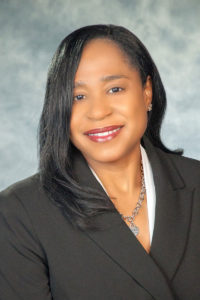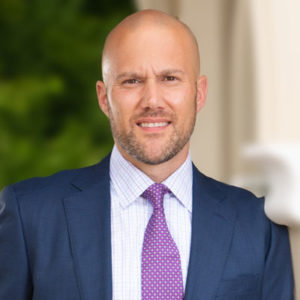

Almost five months ago, long-term care residents in Ohio were among the first in the nation to receive COVID-19 vaccinations through the federal Pharmacy Partnership for Long-Term Care Program.
That early start — Dec. 18 for some facilities — also meant many nursing homes wrapped up their final clinics by late January, with assisted living communities not far behind.
But even as state health officials watched resident vaccination rates climb to 80%, they knew they would need to act quickly to keep the momentum. Their early efforts led to the creation of the Ohio COVID-19 Vaccine Maintenance Program, in which 1,581 of the state’s 1,745 long-term care providers are now enrolled.
“We launched with the understanding that we did not want to have any drop or any disconnect in having vaccines go into the nursing homes or the assisted living facilities,” Ursel McElroy, director of the Ohio Department of Aging, told McKnight’s Long-Term Care News on Tuesday. “There was and there remains a lot of conversation and constant communication with our pharmacies to be sure that we were able to stabilize who was connected with whom and to make sure that the pharmacies were able to be responsive enough that we didn’t have long stretches of time without being able to get vaccine in.”
Continuity has been a major issue in the national vaccination campaign. Some providers reported once-outstanding resident vaccination rates backsliding as they struggled to procure additional doses for newly admitted patients and new employees.
For Chris Chirumbolo, CEO of Loveland, Ohio-based Carespring Health Care Management, Ohio’s approach helped reverse a slight dip in resident vaccination rates that occurred after his buildings held their third federal clinics in February.
“It’s all caught back up,” Chirumbolo said this week, noting a resident vaccination rate of more than 90% and a staff rate of 50% to 60% depending on the building. “We run clinics every two weeks at each building, and we get every new resident.”
Chirumbolo said the Ohio strategy has been successful because officials are working with and listening to providers, particularly when they express specific needs or concerns, such as those dealing with vaccine hesitancy or vaccine preferences.
Supply eases, communication remains
Ohio’s program started when supplies were still limited.
A two-way portal that allows providers to report demand and state officials to see where pharmacies might not be able to meet need has been a critical part of the state’s success, McElroy said.
Officials in the Department of Aging monitor the vaccine portal and can compare data to the state’s COVID-19 dashboard and the federal National Healthcare Safety Network to spot unexplained lags. Those workers, who built relationships with facilities when ramping up COVID-19 testing last year, can facilitate additional support as needed.
Participants in the state program had their choice of 36 long-term care pharmacies as well as how they wanted to structure their partnerships. (About 160 Ohio providers that did not opt into the state-run program are largely using major retail pharmacies to maintain vaccine access.)
“It really looks different for different facilities,” McElroy said. “We have a large number of providers in the state with different needs and different capabilities.”
In one option, pharmacies provide soup-to-nuts coverage, delivering, administering and reporting vaccinations. In another, providers and pharmacists work jointly, with on-site clinical staff administering shots, but pharmacies fulfilling deliveries and reporting. Nursing home operators can also become designated vaccine providers and run their entire program.
Most nursing homes are operating under the joint arrangement for now, with McElroy predicting a rise in facility-administered plans as the pandemic wears on and there is “more comfort with the products.”
That plan, she said, might be best for providers who need a regular, high volume of shots or those who need fewer doses and are comfortable with the Johnson & Johnson vaccine, which is the most easily stored.
Vaccine variety
As of Monday, the state had facilitated 1,606 clinics. Doses delivered have ranged from 1 to 140 at a time.
Statewide, 90% of 96,000 long-term care residents and 52% of 138,000 staff are vaccinated.
A key feature of the Ohio program, McElroy and Chirumbolo said, is its flexibility. Providers can make a switch to a new pharmacy at any time, and state officials will help make a match based on geography, supply and pharmacies’ workforce availability.

Chirumbolo said his existing long-term care pharmacy, Lifeline 24, picked up several new customers as part of its COVID-19 vaccination efforts.
Pharmacists have also been able to provide facilities with state-allotted Pfizer, Moderna and J&J shots, while being allowed to remain in line for federal allocations of the two-dose vaccines. That’s been critical when it comes to pushing staff vaccinations higher, Chirumbolo said.
When a staff member expresses a preference for one type over another, Chirumbolo can report that and expect that he’ll be able to get the right match delivered.
The state also offers resources to help providers convince staff vaccination is the right choice for them. About 2,000 people attended a recent roundtable on vaccine safety, which is available on-demand as well.
“The thing going forward is probably at least 50% to 75% of all of our new patients are being admitted fully vaccinated,” Chirumbolo said. “So that need is gradually becoming less and less. Our goal now is to try and get any new team members and team members who have been wanting to wait and see what is going on.”
If one of his eight Ohio locations doesn’t have enough interest to run its own clinic, staff are invited to attend a clinic at another Carespring building or even through a clinic arranged by a competitor in the greater Cincinnati-Dayton region.
He’s seeing staff percentage increases tick up every couple of weeks.
“Our goal is to try and keep maintaining,” Chirumbolo said. “It means a lot more in the nursing home world, not just for risk and safety. It means more for quality of life for those residents now.”




